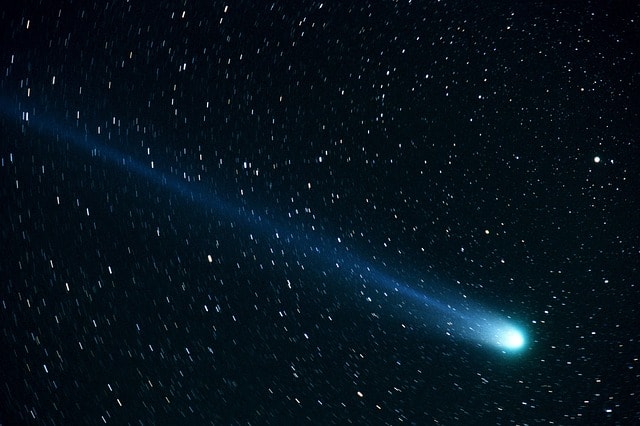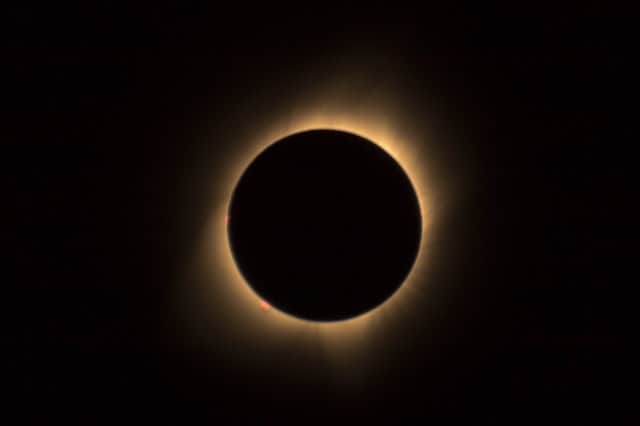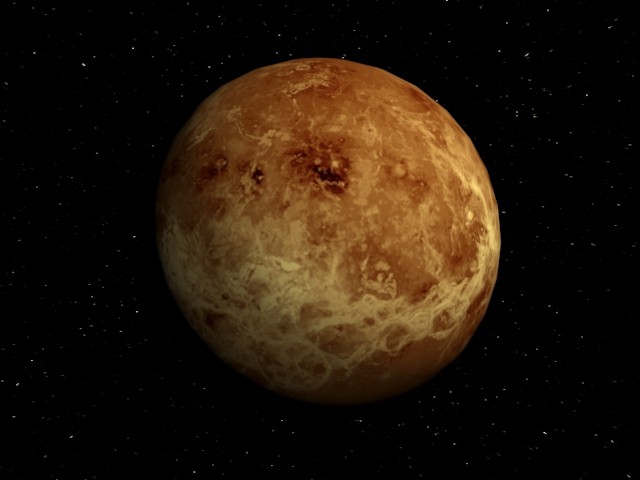35 Phenomenal Facts About the Planet Pluto

Pluto was discovered in 1930 and is the second closest dwarf planet to the Sun. Pluto’s diameter is close to 2,370 km (1473 miles) and orbits in a region called the Kuiper Belt. Pluto is one of the coldest places in the solar system as it is far way from the Sun. It hasn’t even completed one orbit since it was discovered in 1930. A single Plutonian year is 247.68 Earth years.
The temperature on Pluto is 375 to 400 degrees Fahrenheit and about 1/15 the gravity of Earth. Pluto is more than 3.6 billion miles (5.8 billion kilometers) away from the sun. Here are 35 phenomenal facts about the planet Pluto.
Fact 1. Pluto was discovered on February 18th, 1930 by Clyde Tombaugh of the Lowell Observatory. Photographic evidence of the ninth planet was first sighted by 24-year-old research assistant Clyde Tombaugh at the Lowell Observatory in Flagstaff, Ariz. In the 76 years between its discovery and subsequent reclassification as a dwarf planet, the planet completed under one third of its 3.6billion and 246- years orbit around the sun.
Fact 2. The planet is named for Pluto, the Roman god of the underworld. An eleven-year-old Venetia Burney suggested the name Pluto. She thought it would be a good name since Pluto is so dark and far away, like the god of the underworld. The name Pluto was voted for by astronomers because the first two letters of the word are Percival Lowell’s initials. On May 1, 1930, the name Pluto became official, and the little girl received a £5 note as a reward.
Fact 3. Pluto has five moons. The latest of these moons was found five years ago. They include; Charon (1978), Hydra and Nix (2005), Kerberos (2011) and Styx (2012).
Fact 4. In 2006, Pluto was reclassified from a planet to a dwarf planet. Pluto lost its status as the ninth planet of the solar system in 2006 when the International Astronomical union formalized a definition of a planet. But Pluto failed to meet all the criteria. It is now classified as a dwarf planet.
Fact 5. Due to the dwarf-planet concept, these bodies (moons) are no longer called Pluto’s moons officially in 2012, but they are rather called objects bound to Pluto. It takes Pluto 6 days, 9 hours, and 17 minutes to spin once, making it the planet with the second-slowest rotation in the solar system.
Fact 6. Pluto is 33% water in the form of ice and 67% rock. It means that there is more than three times as much water on Pluto as in all the oceans on earth, despite the dwarf planet being just 13.05billion kgs in mass.
Fact 7. Pluto and its moon Charon form a binary system. This means that the center of mass of the two objects is outside of Pluto and Pluto moves in small circles while Charon orbits it.
Fact 8. The orbit of Pluto is chaotic and unpredictable. Scientists are able to predict the location of Pluto along its orbit path for the next 10-20 million years – beyond that it is unknown.
Fact 9. Pluto’s Orbit is Elliptical. This implies that it can come closer to the sun than Neptune, but then go almost two billion further away from Neptune’s orbit
Fact 10. Pluto has a strange wobbly dance of an orbit. This takes it closer to then further away from the sun. This takes it between 2.6 and 4.4 billion miles from the sun. This implies that Pluto is periodically closer to the Sun than the Planet Neptune.
Fact 11. Pluto is the only known dwarf planet with an atmosphere. It is very thin and would be toxic for humans to breathe. When Pluto is at its perihelion (closest to the sun), Pluto’s atmosphere is gas. When Pluto is at its aphelion (farthest from the sun), its atmosphere freezes and falls like snow.
Fact 12. When Pluto was considered a planet, it was the coldest of all the planets. Temperatures on Pluto can range from -240° to -218° C. The average temperature on Pluto is -229° C.
Fact 13. Pluto spins in the opposite direction as Earth, which means the sun rises in the west and sets in the east. Only Venus, Uranus, and Pluto have a retrograde rotation.
Fact 14. It takes about five hours for sunlight to reach Pluto. It takes about eight minutes to reach Earth.
Fact 15. Pluto’s moon Charon is almost the size of the planet itself. Astronomers sometimes refer to the two as a double planet.
Fact 16. A person who weighs 100 lbs. on Earth would weigh the least on Pluto than on any other planet, at 6.7 lbs. on Pluto.
Fact 17. Some astronomers hypothesize that Pluto is just an escaped satellite of Neptune that pulled out of Neptune’s atmosphere and made its own orbit.
Fact 18. The sky is so dark on Pluto that a person would be able to see stars during the day.
Fact 19. Because Pluto’s moon Charon and Pluto orbit each other, Charon appears to stand still in Pluto’s sky. Additionally, the same sides of Pluto and Charon always face each other.
Fact 20. In 1941, the newly created element plutonium was named after Pluto.
Fact 21. The Disney character Pluto, a dog, is said to have been named after the former planet.
Fact 22. Pluto’s name is now asteroid number 134340 after being downgraded from a planet to a dwarf planet. (Dwarf planets are one type of astronomical object catalogued as an asteroid.)
Fact 23. Pluto’s distance from Earth varies. At its closest, Pluto is 4.2 billion kilometers (2.6 billion miles) away. At its farthest, Pluto is about 7.5 billion kilometers (4.7 billion miles) from Earth. It would take 10 years for a spaceship to reach Pluto.
Fact 24. Pluto is the second-largest dwarf planet in the solar system while Eris is the largest dwarf planet.
Fact 25. Pluto is smaller than Mercury and seven other moons, including Ganymede, Titan, Callisto, Io, Europa, Triton, and Earth’s moon.
Fact 26. Many astronomers believe Pluto would be classified as a comet if it were closer to the sun.
Fact 27. While Pluto was downgraded from a planet to a dwarf planet, or “plutoid,” several astronomers argued that Pluto and other small objects similar to Pluto should all be classified as planets because they have cores, geology, seasons, moons, atmospheres, clouds, and polar caps in many cases.
Fact 28. For 20 years of its almost 248-year orbit, Pluto is closer to the sun than Neptune because of its off-center and highly inclined orbit. For example, from 1979 to 1999, Pluto was the eighth planet and Neptune was the ninth. Now Pluto is back to being the ninth planet (though dwarf) for the next 228 years. It will be closer to the sun again on April 5, 2231.
Fact 29. Pluto rotates on its side, which means is has extreme seasonal variation. At its solstices, a quarter of its surface is in permanent daylight, while another quarter is in permanent darkness.
Fact 30. Sunlight is almost 2,000 times dimmer on Pluto than it is on Earth, and the sun would be only a small point in the sky. The sun would be 1/30 as big and 1/900 as bright as it is on Earth, though it would still be much brighter than a full moon.
Fact 31. The official symbol for Pluto is the interlocking letters of P and L, which not only stand for the first two letters of the planet but also are the initials of Percival Lowell.
Fact 32. On Pluto, the sun rises and sets about once a week.
Fact 33. Pluto is approximately 4.6 billion years old, about the same age as the rest of the solar system.
Fact 34. In 2006, NASA launched the first mission to Pluto. It was called New Horizons. It is about the size of a piano. It took nine years to reach Pluto.
Fact 35. New Horizons spacecraft will study another object in the Kuiper Belt in 2019.





